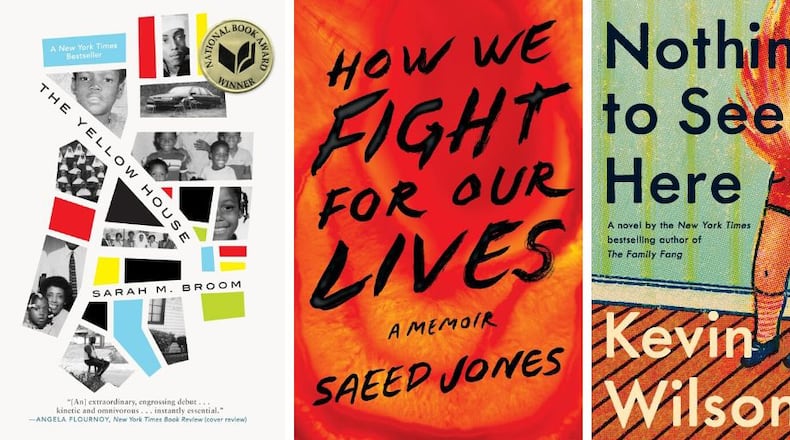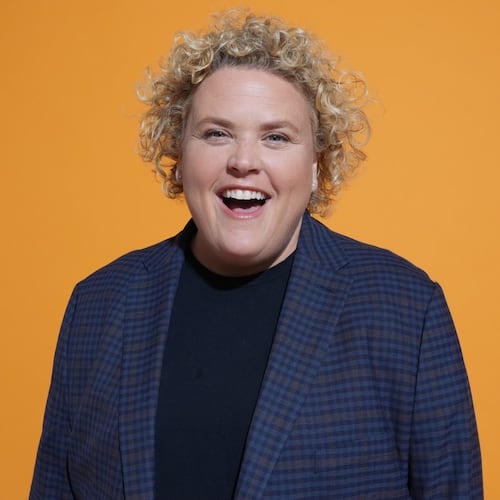Southern writers had a significant impact on the world of publishing in 2019. And when we talk about Southern writers, we mean writers who are from the South, or who live here now, or who write about the South with authenticity.
Most notably, New Orleans native Sarah M. Broom won the National Book Award in nonfiction for her ambitious memoir, “The Yellow House.” She was in good company, beating out fellow Southern finalists Tressie McMillan Cottom (“Thick and Other Essays”) and Albert Woodfox (“Solitary”). And Atlanta poets Jericho Brown (“The Tradition”) and Ilya Kaminsky (“Deaf Republic”) were short-listed for the prize in poetry.
The year marked a bountiful output from Atlanta authors, especially women novelists, including Soniah Kamal’s “Unmarriageable,” a retelling of “Pride and Prejudice” set in Pakistan, and Anissa Gray’s literary debut, “The Care and Feeding of Ravenously Hungry Girls.”
It was also a big year for writers of color, a highlight being Ta-Nehisi Coates’ literary debut, “The Water Dancer.”
With such a wealth of titles to choose from, narrowing down the field to 10 favorites was a particularly difficult task this year. But in consultation with the AJC’s regularly contributing book critics, here is our list of the cream of the crop for 2019.
Singer/songwriter Allison Moorer was a teenager asleep in her rural Alabama home when she was wakened by the sound of two shotgun blasts that signaled the murder-suicide of her warring parents. Her harrowing memoir traces the trajectory of her parents’ tragic lives, and details from a child’s-eye view what life was like inside a powder keg of domestic dysfunction. Moorer and her sister, country artist Shelby Lynne, did not escape their childhood unscathed, but their sisterly bond and shared passion for music sustains them and gives the ending of “Blood” a sense of hope. (Da Capo Press)
Memphis native Saeed Jones first garnered attention for his poetry with his 2014 collection “Prelude to Bruise.” In this eloquent memoir, he explores what it was like growing up black, gay, and the only child of a single mother in a wealthy suburb of Dallas. Along the way, he comes to terms with his homosexuality, comes out to his mother and navigates his fears embodied by hate crimes and the specter of AIDS. Says AJC book critic Anjali Enjeti, “Jones is an engaging narrator, a lover of language, and his use of imagery to relay his coming of age as a gay black teen in the Deep South is cinematic. … ‘How We Fight for Our Lives’ is a meditation on what keeps Jones up at night. But it is also a stunning book that will keep readers up at night, their eyes glued to every page.” (Simon & Schuster)
The opioid crisis hits home in Zoe Fishman’s gripping, domestic drama about a wife and mother who tries to soothe her emotional distress over the stillborn death of her daughter with pain pills prescribed for her husband, who’s injured his ankle on a long-distance bicycle ride. Sylvie starts taking the pills cautiously at first, just hoping to take the edge off her day, but her addiction soon escalates and has devastating effects on her husband and teenage son. Says AJC book critic Becca J.G. Godwin, Fishman’s “writing creeps up on you, like a crescent moon that seems to mysteriously switch sides in the night sky during a drive down a winding highway — taunting, unsettling, beautiful.” (William Morrow)
Atlanta author Jessica Handler’s debut novel is a fictionalized account of Lulu Hurst, a teenage girl from Georgia who toured stages throughout the East Coast during the late 19th century performing an act in which she was believed to harness the power of electricity with the touch of her hand. “Handler has boldly breathed to life a compelling protagonist who is at once relatable and disquietingly unapproachable,” writes Godwin in her review for the AJC. “Instead of feeling that Lulu’s thoughts are invented ideas written for the page, readers sense they have a direct line to another person’s undiluted conscience — and all the weirdness that comes with being privy to another’s personal musings. It’s the kind of writing that makes you shift in your seat, but not dare leave it.” (Hub City Press)
Hot off winning the Pulitzer Prize and National Book Award in Fiction for his 2016 novel “The Underground Railroad,” Colson Whitehead follows up with another explosive novel about race in America. Alternating between the 1960s and the present, “The Nickel Boys” tells the story of Elwood Curtis, a teenager inspired by the civil rights movement to fight for justice and pursue his dreams. But he is derailed when he is unjustly incarcerated in a savage juvenile reformatory in Florida, an experience that has long-range ramifications on his life. “There’s little of Whitehead’s customary sly wit here,” writes Walter Biggins in his review for the AJC. “The few laugh-out-loud jokes in ‘The Nickel Boys’ are bitter, charred. But the sobriety fits, for this novel frequently brought me up short, made me gasp all the more for its dry, matter-of-fact renderings of the banality of evil, and, more importantly, the necessary resistance to it.” (Doubleday)
Children who spontaneously burst into flames are at the center of Tennessee author Kevin Wilson’s dark and humorous new novel. Lillian is living a dead-end life, working a minimum-wage job and crashing in her mother’s attic, when she’s summoned by her former prep school roommate, Madison, to be a nanny to her twin stepchildren. What Lillian doesn’t know is that the children were born with a genetic condition that causes them to catch fire when they’re agitated, and Madison and her husband, the Senator, want nothing to do with them. Lillian begins to identify with the children’s outsider status and develops the first inkling she’s ever experienced of what she thinks might be love. When it becomes clear that the twins are an impediment to the Senator’s political career, Lillian is forced to take drastic steps to protect them. (Ecco)
It’s unfathomable what humankind can endure. The subtitle says it all: “Unbroken by Four Decades of Solitary Confinement. My Story of Transformation and Hope.” Albert Woodfox spent 43 years in solitary confinement at the Louisiana State Penitentiary in Angola until his conviction for the murder of a prison guard was overturned. He was released in 2016 at age 69. In his memoir about his youth and four decades of incarceration, Woodfox expresses remorse for his early life of petty crime and auto theft: “Writing about this time of my life is very difficult. I stole from people who had almost nothing. My people. Black people.” But he credits members of the Black Panthers, whom he met in prison; their philosophy of honesty and sobriety; and a lifetime devoted to self-education for giving him the strength to survive his imprisonment. (Grove Atlantic)
Pulitzer Prize-winning journalist Tony Horwitz unexpectedly died of cardiac arrest two weeks after the publication of this sweeping account of his journey across the South. He followed the footsteps of Frederick Law Olmsted, who, before he became a landscape architect, was a journalist who toured the Southern states reporting on slavery prior to the Civil War. As the subtitle, “An Odyssey Across the American Divide,” implies, Horwitz chronicles the polarity of politics and ideologies gripping our country today. Says Curt Holman in his review for the AJC, “’Spying on the South’s’ overall thesis comes across as a little fuzzy, alternating between modern-day travelogue, biographical sketches of Olmsted and sociopolitical commentary on class and race in the South. But even when the book’s general direction seems vague, Horwitz’s excellence as a writer and reporter unearths forgotten chapters of history while making fascinating present-day discoveries.” (Penguin)
Atlanta author Susan Rebecca White’s novel tells the story of a friendship between two women that spans decades and generations. Eve and Daniella meet at a private college in the ‘60s and get caught up in the turbulent times of political unrest. Their lives take two very different paths when Eve becomes involved with a violent radical organization. Many years later, after Eve has put her dangerous activities behind her, her past comes back to haunt her. Says Godwin in a review for the AJC, “with a surgeon’s delicate precision, White examines sensitive and timely topics such as race, gender inequality, sexual abuse, religion and sexuality.” (Simon & Schuster)
Sarah M. Broom’s stunning debut tells the story of growing up the youngest of 12 siblings in a raggedy, two-room shotgun house in a run-down part of New Orleans. It is a heartbreaking look at a proud, loving family working as hard as they can to make a good life for themselves but being thwarted by forces beyond their control, from devastating hurricanes to death to greedy developers. As stated in the AJC review, “Broom has done an astonishing job stitching together the stories of her family, the history of the city and her investigations into how developers and governmental agencies contributed to her family’s situation, and she embroiders it with enough heart and drama to keep the reader awake at night, eager to see the outcome.” (Grove Atlantic)
About the Author
The Latest
Featured













